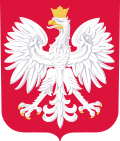Background
In 1919, the borders of the newly restored Polish state were not yet established. As a result, the government of Poland led by Jozef Pilsudski had problems creating the electoral districts. Upon a decree, signed by Pilsudski on 28 November 1918, Poland was divided into several districts, some of whom were not even part of the country. The list of these districts presents a declaration of Polish territorial claims rather than real situation of late 1918. It covers the whole territory of the Kingdom of Poland (1916–1918), formerly Russian Belostok Oblast, as well as whole former Austrian province of Galicia, even though its eastern part was area of a conflict between Poles and Ukrainians (see Polish–Ukrainian War).
The situation was even more complicated in the West, in territories which had belonged to the German Empire. Polish legislators created there several electoral districts, even in lands that never became part of the Second Polish Republic. Thus, apart from districts of Poznań, Toruń, Kartuzy, Katowice, and Gostyń, the government stipulated creation of districts in such locations, as Bytom (Beuthen), Nysa, Złotów (Flatow), Gdańsk (Danzig), and Olsztyn (Allenstein). [2] The 1919 election was not organised in these areas, as they remained part of Germany until 1945.
Furthermore, Polish legislators wanted the election to be organised in whole Cieszyn Silesia (see also Trans-Olza). Therefore, districts were created there in Cieszyn and Frýdek-Místek. Also, the Nowy Targ district covered several communes of Orawa, and Spisz, with such towns, as Kežmarok, Stará Ľubovňa, and Spišská Nová Ves (these locations had been part of Poland until the late 18th century).
This page is based on this
Wikipedia article Text is available under the
CC BY-SA 4.0 license; additional terms may apply.
Images, videos and audio are available under their respective licenses.


